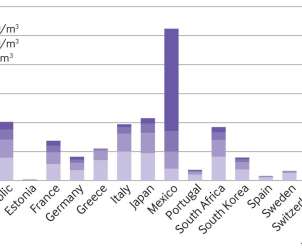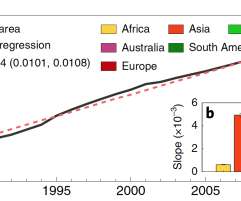Global study links daily exposure to ozone pollution to increased risk of death
Green Car Congress
FEBRUARY 11, 2020
Ground level ozone is a highly reactive gas commonly found in urban and suburban environments, formed when pollutants react in sunlight. Recent reviews suggest that 80% of the world’s population in urban areas are exposed to air pollution levels above the WHO threshold. g/m 3 (WHO), 120 ?g/m Vicedo-Cabrera et al.















Let's personalize your content